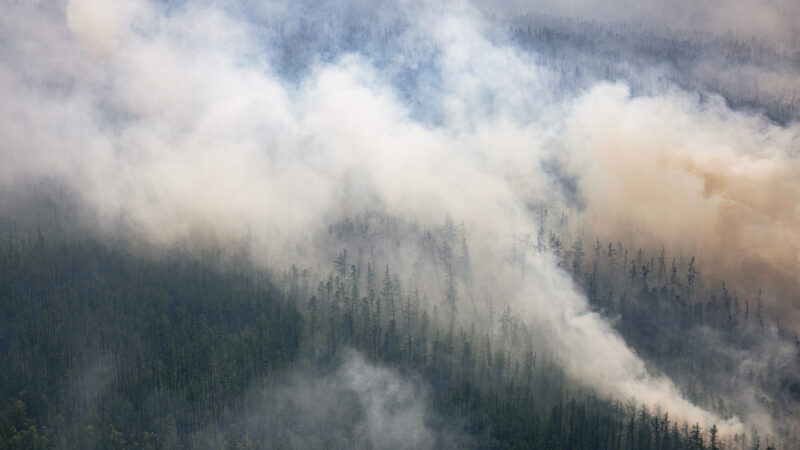Wildfires in boreal forests released a record amount of CO2 in 2021

WASHINGTON — In 2021, wildfires pillaged the world’s carbon-rich snow forests.
That year, burning boreal forests released 1.76 billion metric tons of carbon dioxide, researchers reported March 2 in a news conference at the annual meeting of the American Association for the Advancement of Science.
That’s a new record for the region, which stores about one-third of the world’s land-based carbon. “It’s also roughly double the emissions in that year from aviation,” said earth system scientist Steven Davis of the University of California, Irvine. The trend, if it continues, threatens to make fighting climate change even more difficult.
Science News headlines, in your inbox
Headlines and summaries of the latest Science News articles, delivered to your email inbox every Thursday.
Thank you for signing up!
There was a problem signing you up.
Boreal forests are part of the taiga, a vast region that necklaces the Earth just south of the Arctic Circle. Blazes in tropical forests like the Amazon tend to garner more attention for their potential to contribute large amounts of climate-warming gases to the atmosphere (SN: 9/28/17). But scientists estimate that on a per area basis, boreal forests store about twice as much carbon in their trees and soils as tropical forests.
Climate change is causing the taiga to warm about twice as fast as the global average. And wildfires are growing more widespread in the region, releasing more of the trapped carbon, which in turn can worsen climate change (SN: 5/19/21).
Davis and his colleagues analyzed satellite data on carbon emissions from boreal regions from 2000 to 2021. In 2021, emissions from boreal wildfires made up a whopping 23 percent of all the CO2 emitted by wildfires around the world, the researchers report in the March 3 Science. In contrast, CO2 emissions during an average year from 2000 to 2021 were about 10 percent.
The record-breaking emissions coincided with widespread heat waves and droughts in Siberia and northern Canada, probably fueled by human-caused climate change.
There’s no data yet to show if 2022 saw a similar surge in emissions. But, Davis said, “there’s not actually that much evidence that this record will stand for long.”
For all the latest Science News Click Here
For the latest news and updates, follow us on Google News.

